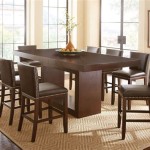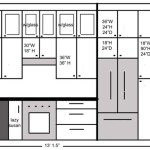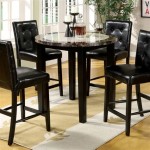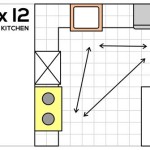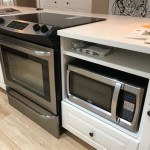Kitchen Faucet 4 Hole With Sprayer: A Comprehensive Guide
The kitchen faucet 4 hole with sprayer is a common configuration in many kitchens, offering a balance of functionality and aesthetic appeal. This design typically involves four separate holes in the sink or countertop to accommodate the faucet body, hot and cold water handles, and a separate sprayer. Understanding the nuances of this type of faucet, from its installation and maintenance to its various styles and benefits, is crucial for homeowners considering this option.
This article provides a detailed overview of the kitchen faucet 4 hole with sprayer. It examines the components that comprise this faucet type, explores the various styles and finishes available, discusses the installation process, and outlines key maintenance procedures to ensure longevity and optimal performance. Furthermore, it will consider the pros and cons of choosing a four-hole configuration compared to other faucet designs.
Understanding the Components of a 4-Hole Kitchen Faucet with Sprayer
A kitchen faucet 4 hole with sprayer consists of several key components that work together to deliver water efficiently and effectively. These components are designed to be integrated harmoniously, and understanding their individual roles contributes to informed decision-making regarding selection, installation, and maintenance.
The primary component is the faucet body itself. This is the central structure through which water flows, connecting the water supply lines to the spout. The body houses the valve mechanisms and provides the foundation for the other components. Materials commonly used for the faucet body include brass, stainless steel, and occasionally, zinc alloys. Brass is often preferred for its durability and resistance to corrosion, while stainless steel offers a modern aesthetic and is also known for its longevity.
Next are the hot and cold water handles. These control the flow and temperature of the water. They are connected to valve cartridges or compression stems within the faucet body. Cartridge valves, popular for their ease of use and resistance to leaks, use a ceramic disc mechanism to regulate water flow. Compression stems, an older technology, rely on rubber washers to seal the water flow. Single-handle faucets, while technically requiring only one hole, can be adapted for four-hole configurations using escutcheon plates.
The sprayer assembly is another fundamental component. It consists of the sprayer head, a flexible hose, and a diverter valve located within the faucet body. The diverter valve redirects water flow from the main spout to the sprayer when the sprayer handle is activated. The sprayer head itself typically offers multiple spray patterns, providing versatility for various kitchen tasks, such as washing dishes, rinsing produce, and cleaning the sink. Sprayer hoses are generally made of reinforced rubber or braided stainless steel for durability and flexibility.
Finally, the spout is the outlet through which water is dispensed. Spouts are available in a variety of shapes and sizes, including high-arc, low-arc, and gooseneck designs. The choice of spout style depends on functional needs and aesthetic preferences. High-arc spouts provide more clearance for filling large pots and pans, while low-arc spouts offer a more streamlined appearance. Some spouts also feature pull-down or pull-out functionality, further enhancing their versatility.
Exploring Styles and Finishes for 4-Hole Kitchen Faucets with Sprayer
Beyond functionality, the aesthetic appeal of a kitchen faucet is a significant consideration for homeowners. Kitchen faucets 4 hole with sprayer are available in a wide range of styles and finishes to complement various kitchen designs, from traditional to contemporary.
Traditional styles often feature ornate designs with curved lines and decorative details. These faucets typically incorporate finishes such as polished brass, oil-rubbed bronze, and antique copper to evoke a sense of classic elegance. The handles may be lever-style or cross-handle, adding to the traditional aesthetic. These faucets often complement kitchens with classic cabinetry and detailing.
Contemporary styles, on the other hand, emphasize clean lines, minimalist designs, and modern finishes. Stainless steel is a popular choice for contemporary faucets, providing a sleek and durable look. Other common finishes include chrome, brushed nickel, and matte black. Handle designs are typically simple and functional, such as single-lever or straight-line designs. Contemporary faucets often feature innovative technologies, such as touchless operation or integrated water filtration systems.
Transitional styles bridge the gap between traditional and contemporary designs, blending elements of both. These faucets may feature a combination of curved and straight lines, with finishes such as brushed stainless steel or polished nickel. Transitional faucets offer versatility and can complement a wide range of kitchen styles.
The choice of finish is crucial for both aesthetic and practical reasons. Chrome is a classic finish that is easy to clean and maintain. Stainless steel is durable and resistant to corrosion, making it a long-lasting option. Brushed nickel offers a softer, warmer tone compared to chrome and is less prone to showing fingerprints. Oil-rubbed bronze provides a rustic, antique look. Matte black is a modern finish that adds a touch of sophistication to any kitchen.
Beyond the basic finishes, some faucets offer more specialized options, such as polished brass (which requires more maintenance to prevent tarnishing), or custom color options to match specific kitchen design schemes. The selection of style and finish should be carefully considered to ensure harmony with the overall kitchen aesthetic.
Installation and Maintenance of a 4-Hole Kitchen Faucet with Sprayer
Proper installation and regular maintenance are essential for ensuring the longevity and optimal performance of a kitchen faucet 4 hole with sprayer. While professional installation is recommended for those without plumbing experience, understanding the basic steps involved can empower homeowners to address minor issues and perform routine maintenance.
The installation process typically begins with disconnecting the old faucet and preparing the sink or countertop. This involves shutting off the water supply lines to the faucet and disconnecting the existing supply lines. The old faucet can then be removed, and the sink or countertop should be thoroughly cleaned to remove any debris or old sealant.
The new faucet is then assembled according to the manufacturer's instructions. This typically involves attaching the faucet body to the sink or countertop, connecting the hot and cold water handles, and installing the sprayer assembly. The supply lines are then connected to the faucet, ensuring that the hot and cold water lines are properly identified and connected to the corresponding handles.
Once the faucet is installed, it is important to check for leaks. Turn on the water supply slowly and inspect all connections for any signs of leaks. If leaks are detected, tighten the connections or replace any faulty parts. A plumber’s putty or silicone sealant can be used to seal the base of the faucet to the sink or countertop to prevent water from seeping underneath.
Regular maintenance is crucial for preventing problems and extending the lifespan of the faucet. This includes cleaning the faucet regularly with a mild soap and water solution to remove dirt and grime. A soft cloth should be used to avoid scratching the finish. Mineral deposits can accumulate around the spout and sprayer head, reducing water flow. These deposits can be removed with a solution of vinegar and water. Allow the solution to soak for a few minutes before scrubbing gently with a soft brush.
The sprayer hose should also be periodically inspected for cracks or leaks. If the hose is damaged, it should be replaced immediately. The diverter valve within the faucet body can also become clogged with debris over time. To clean the diverter valve, it may be necessary to disassemble the faucet and flush the valve with water. Replacing the O-rings and washers periodically can also prevent leaks and maintain a tight seal. For more complex repairs or issues, consulting a professional plumber is always recommended.
Choosing a kitchen faucet 4 hole with sprayer requires careful consideration of functionality, aesthetics, and installation requirements. By understanding the components, styles, finishes, and maintenance procedures associated with this type of faucet, homeowners can make informed decisions that enhance the functionality and beauty of their kitchens.

Bwe Double Handles 4 Holes Standard Kitchen Faucet Sink With Side Sprayer In Brushed Nickel A 92010 N The Home

Wowow Black Kitchen Faucet With Side Sprayer 4 Hole Brass Faucets For Sink

Bwe Double Handles 4 Holes Standard Kitchen Faucet Sink With Side Sprayer In Matte Black

Kingston Brass Ks8723cmlbs Manhattan 8 Inch Widespread Kitchen Faucet With Sprayer Antique

Bwe Modern Double Handle 4 Holes Deck Mount Bridge Kitchen Faucet With Side Sprayer Sink 360 Swivel Spout In Black

Kingston Brass Ks8723cmlbs Manhattan 8 Inch Widespread Kitchen Faucet With Sprayer Antique

Wowow Double Handle Bridge Kitchen Faucet With Side Sprayer Black

Chatham Kb821k1 Single Handle 4 Hole Deck Mount Widespread Kitchen Faucet With Sprayer And Soap Dispenser Polished Chrome
Price Pfister F 026 4cbs Avalon Kitchen Sink Faucet Stainless Steel

Manhattan Ks8720cmlbs Double Handle 4 Hole Widespread Kitchen Faucet With Brass Sprayer Matte Black


